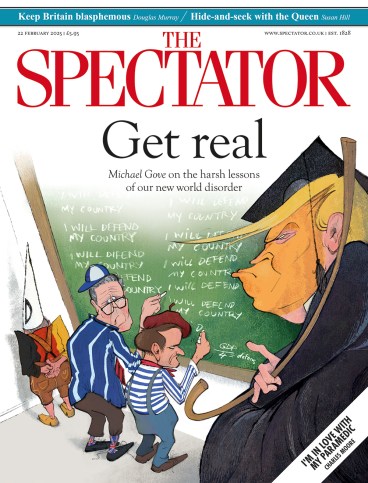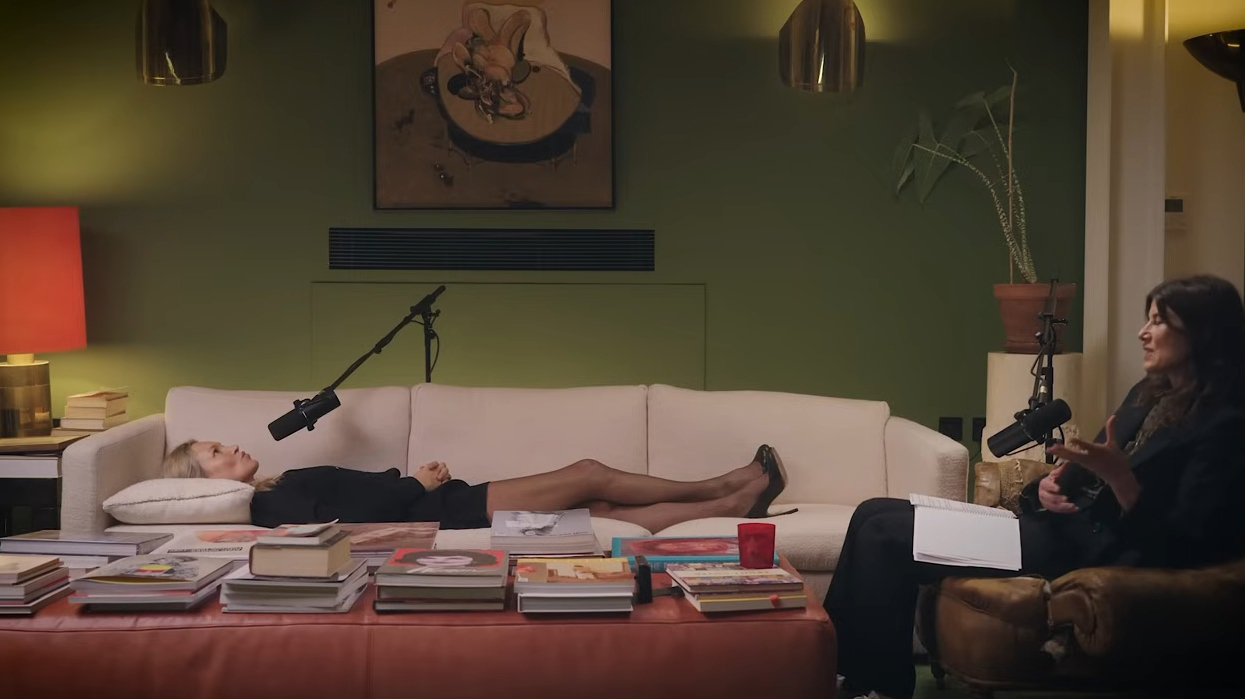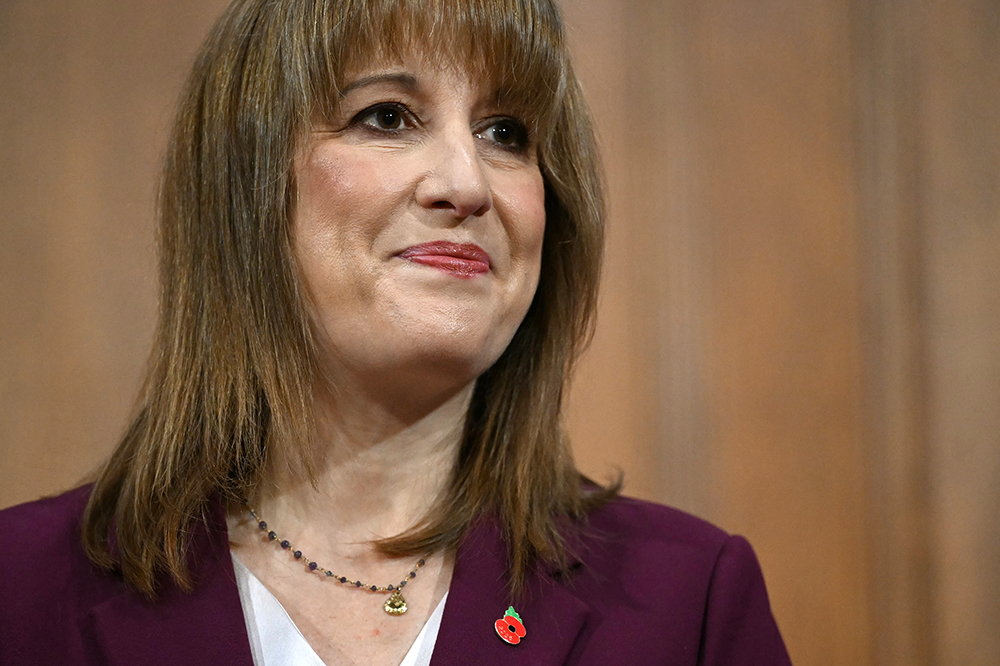
Sometimes the mind needs to take a break. And I can’t think of a better stopping-off place than the soothing, gloriously bonkers discussions on the Fashion Neurosis podcast, hosted by the British fashion designer Bella Freud. Its premise is that Freud, daughter of Lucian and great-grand-daughter of Sigmund, encourages guests to recline on her couch and talk over any and every aspect of their relationship to fashion. Her mellifluous, affirming manner is much more soft soap than wire wool, but this is not territory that requires a Robin Day, and the concept proves a surprisingly fruitful route into family history, personal stories and high-grade gossip. The pool of guests is a commendably eclectic one: they have thus far included Nick Cave, Kate Moss, Cate Blanchett, Zadie Smith and the Norwegian author Karl Ove Knausgaard.
Alongside the audio of each interview, there is a little video of Freud and her subject talking: the fact that interviewees are lying down somehow renders them more innocent and unguarded than usual, like rambling children at bedtime. Even those who favour low-key apparel reveal moments when fashion has delivered a notable thrill or anxiety. Knausgaard, who exudes a thoughtful melancholy, arrives clad in his out-there-meeting-people outfit of black jeans, black T-shirt, black shoes and, for winter, a black sweater. In his early teens, he said, he annoyed his father by shaving his head and getting a cross-shaped earring in each ear. When his father saw the new look, ‘he said, “Well, you look like an idiot.” And that was kind of what I wanted to achieve, I think.’
Still, his father delivered his own visual disturbances. As a local teacher and politician, he had once dressed ‘like a proper, proper adult’ in tweed suits with elbow patches, an authoritative costume which the ten-year-old Karl Ove found ‘safe’. Then when his parents got divorced, his father started drinking heavily, inviting people over, and adopted a new, almost hippie-ish style which, ominously, involved ‘tunics’. To the late teenage Karl Ove this sudden parental flamboyance signalled, not liberation, but a scary disintegration of the known order. Perhaps that’s why he prefers his own clothes to speak quietly. This was, he said of the interview, ‘my first therapy session ever’.
To others, such as Kate Moss, the dressing-up box was always a reliable source of unalloyed joy. Moss lies on the couch rocking a carefully chosen combo of sheer tights and towering Vivienne Westwood heels, and reminisces dreamily in her sexy little croaky voice about outfits she has known. The curtain gradually goes up on her world of like-minded glamour addicts, and their zest in costuming themselves. The model and Rolling Stones’ muse Anita Pallenberg used to come round to her house, she says, and ‘we would spend all night in my wardrobe, doing “looks”.’ You can tell when one of the guests here is immersed full-time in fashion, because they freely deploy the verbal construction I call ‘the fashion singular’: unlike sartorial civilians, you’ll hear them speaking of ‘a red lip’ or ‘a platform heel’, as though the concept is already reverentially placed on a designated plinth in their mind.
Perhaps my favourite guest was Nicky Haslam, the interior designer and playful arbiter of good taste, who is better value than ever aged 85. When asked what he is wearing, he immediately says, ‘Head to toe Primark!’ and then he’s off, gamely admitting to everything, including tinting a quiff on his head and his pubic hair with eyelash dye, having a facelift – ‘God, yes!’ – and calling Jean Shrimpton ‘gangly and hideous’ before she became a star model and one of his best friends. He remembers the Duchess of Windsor, whom he adored, and ‘poor Marilyn’ (Monroe), answering the door just a few weeks before she died, clearly troubled and ‘an absolute wreck’. I’m looking forward to hearing who comes on the show next, but if Fashion Neurosis ever has a spin-off, I think Haslam alone could probably sustain at least one interview a week.
Over on Radio 4’s Word of Mouth, the author and host Michael Rosen was wondering what happened to the Cockney backchat of his childhood: when accused of some minor crime, his schoolmates used to respond, ‘No I never!’, a formulation that has largely vanished now. Some had sinuous routes to meanings that left him baffled even at the time: ‘It’s taters out!’ one would say regularly, a piece of rhyming slang whereby potatoes, or ‘taters in the mould’, led one to ‘cold’.
But this ‘old’ cockney speech has gradually been replaced by ‘multicultural London English’ or ‘New School Cockney’ which mingles the previous argot and accent with new words and rhythms. Rosen joins the founders of the Modern Cockney Festival, Andy Green and Saif Osmani, to discuss the evolving diction of London’s working class, why pie and mash should get ‘protected regional status’ as a dish, and the need for pushback against the routine depiction of cockneys in films as gangsters and villains.
The programme left me thinking, too, about that streak of teasing subversion in rhyming slang, and the days when the sly fun of perpetually messing with words wasn’t only for the poets.








Comments